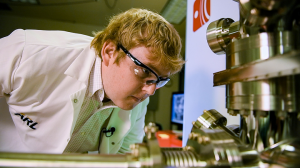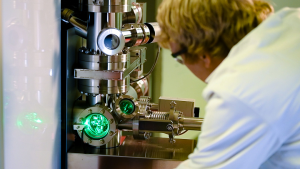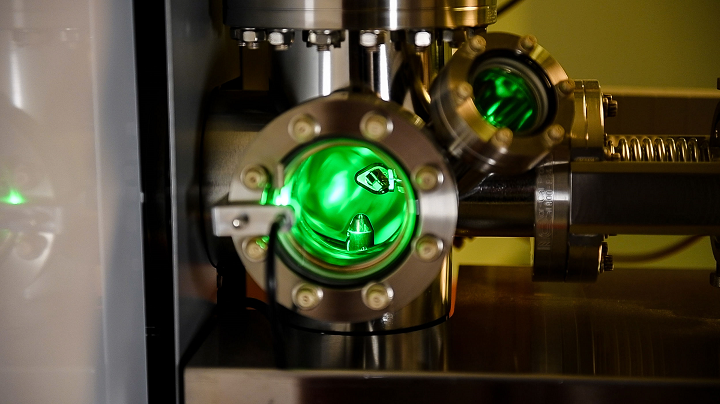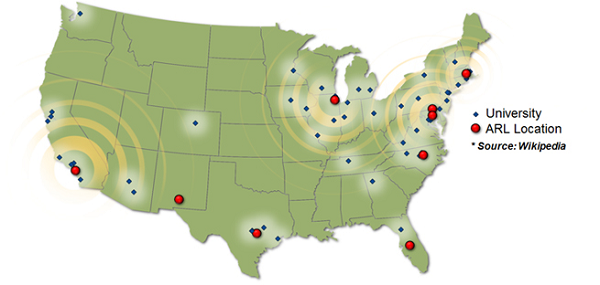 The US Army Research Laboratory (ARL) is responsible for plenty of innovative 3D printing research over the years, such as 3D printing drones and working with recycled 3D printing material. Now, material scientists from the ARL have their sights set on something much smaller that could have a very large impact – analyzing atomic-level metal and ceramic specimens.
The US Army Research Laboratory (ARL) is responsible for plenty of innovative 3D printing research over the years, such as 3D printing drones and working with recycled 3D printing material. Now, material scientists from the ARL have their sights set on something much smaller that could have a very large impact – analyzing atomic-level metal and ceramic specimens.
Dr. Chad Hornbuckle, a materials scientist with the ARL’s Weapons and Materials Research Directorate, specializes in microstructural characterization using electron microscopes and atom probe tomography (APT), and is working on the atomic-level research. He said that the unique atom probe being used in this research not only sets the standard for accuracy in chemistry, but is also necessary to understanding the interior structure of materials themselves.
“The atom probe gives us a 3-D reconstruction at the atomic level. When you see the reconstruction that’s made up of millions of dots, the dots are actually individual atoms,” Dr. Hornbuckle explained.
“It’s basically the only machine in the world that can do this at the atomic level. There are machines, like transmission electron microscopes, or TEMs, that do chemical analysis, but it is not as accurate as this.”

Dr. Chad Hornbuckle, a materials scientist with the ARL, specializes in atom probe tomography, which analyzes ceramics or metal 1,000 times smaller than a human hair.
Because experiments require consistency, it’s extremely important to maintain a high level of accuracy during research like this.
Dr. Hornbuckle said, “You might have one effect one time, but if the chemistry changes, you get a completely different effect the next time. If you can’t control the chemistry, you can’t control the properties.”
If you thought working at the nanoscale level was small, consider this: the atomic-level specimens being analyzed in this research are roughly 1,000 times smaller than the end of a strand of human hair. Researchers have to create very sharp tips to get the samples ready for analysis, which are used to mill, or sandblast, the materials away using gallium and either a focused ion beam microscope or a dual beam scanning electron microscope. Then they are inserted into the atom probe.
The interior of the probe is a super cold vacuum. Atom samples are ionized with a laser, or a voltage pulse, within the probe’s tip, which causes them to field evaporate from the surface. Then, the evaporated ions are analyzed and identified, which results in a 3D model with a near-atomic spatial resolution.
Dr. Hornbuckle himself developed the probe during his time as a graduate student at the University of Alabama. Army scientists and other researchers now ask him for his help in characterizing samples, and use APT technology to determine which atoms are located where in a material.
Dr. Denise Yin, a postdoctoral fellow at ARL, said, “I can give you one specific example of how it’s helped our research. We were electrodepositing copper in a magnetic field and we found a chemical phase using the atom probe that didn’t otherwise show up in conventional electrodeposition.
“Electrodeposition is a process that creates a thin metal coating.
We were having problems identifying this phase using other methods, but the atom probe told us exactly what it was and how it was distributed.”
Dr. Yin said that the atom probe has “impressive” capabilities:
“You can see the atoms show up in real time. Again, it’s at the nanometer scale, so it’s much finer than all the other characterization techniques. The atom probe told us quite easily that the unknown phase was two different types of a copper hydride phase, and that’s not something that we could have detected using those other methods.”
Only a limited number of these atom probes exist, and the one used by the ARL is one of just several in the US. So you can imagine that many universities hope to use it to analyze their own samples. As part of its Open Campus business model, the lab looks for formal agreements.
ARL Director Dr. Philip Perconti explained, “Open Campus means sharing world-class ARL facilities and research opportunities for our partners. A thriving Open Campus program increases opportunities for technology advancement and the transfer of research knowledge.”
Dr. Hornbuckle said that a partnership with Lehigh University yielded some “important results.”

Army scientists explore materials at the nano-level with the goal of finding stronger or more heat-resistant properties to support the Army of the future.
“One university that we collaborate with is Lehigh University. At first, this collaboration was more of a mutual exchange of expertise, where I analyzed some of their samples in the atom probe and they used their aberration-corrected transmission electron microscope to analyze some of our copper-tantalum sample,” said Dr. Hornbuckle. “We now have a cooperative agreement with them to continue this collaboration.
“I actually ran a nickel-tungsten alloy that was electrodeposited for them and identified and quantified the presence of low atomic number elements such as oxygen and sodium. This resulted in one research journal article with several more in preparation.”
The ARL is also collaborating with Texas A&M University on atomic-level analysis.
“This collaboration initiated due to the Open Campus initiative. I have analyzed a few nickel-titanium alloys that had been 3-D printed. They noticed some nanoscale precipitates within the 3-D printed materials, but were unable to identify them with their TEM,” Dr. Hornbuckle said. “I am trying to determine the chemistry of the phase using the atom probe, which should help to identify it.”
The University of Alabama is another of the ARL’s partners, and this collaboration led to several published research journal articles.
“They have a different version of the atom probe. They have run some our alloys in their version and ours to compare the differences noted in the same material. This material is actually being scaled up through a number of processes that are relevant to the Arm,” Dr. Hornbuckle explained.
In addition to creating important and meaningful connections, these various partnerships also provide the Army with access to equipment not found at the ARL. Then, the knowledge that Army researchers learn through this joint research can be applied to current problems the Army is facing, as well as to developing future relevant materials.
Dr. Hornbuckle said, “When you see things no other human has ever seen before, it’s very cool to think that I’m helping to push the envelope of new modern materials science, which then obviously is used for the Army. Every time we run a new material we think about how we can help the Soldier with this new discovery.”
Discuss this research and other 3D printing topics at 3DPrintBoard.com or share your thoughts below.
[Images: US Army photos by David McNally]



32 Replies to “US Army Research Lab Scientists Creating Atomic-Level 3D Reconstructions of Specimens”
Comments are closed.